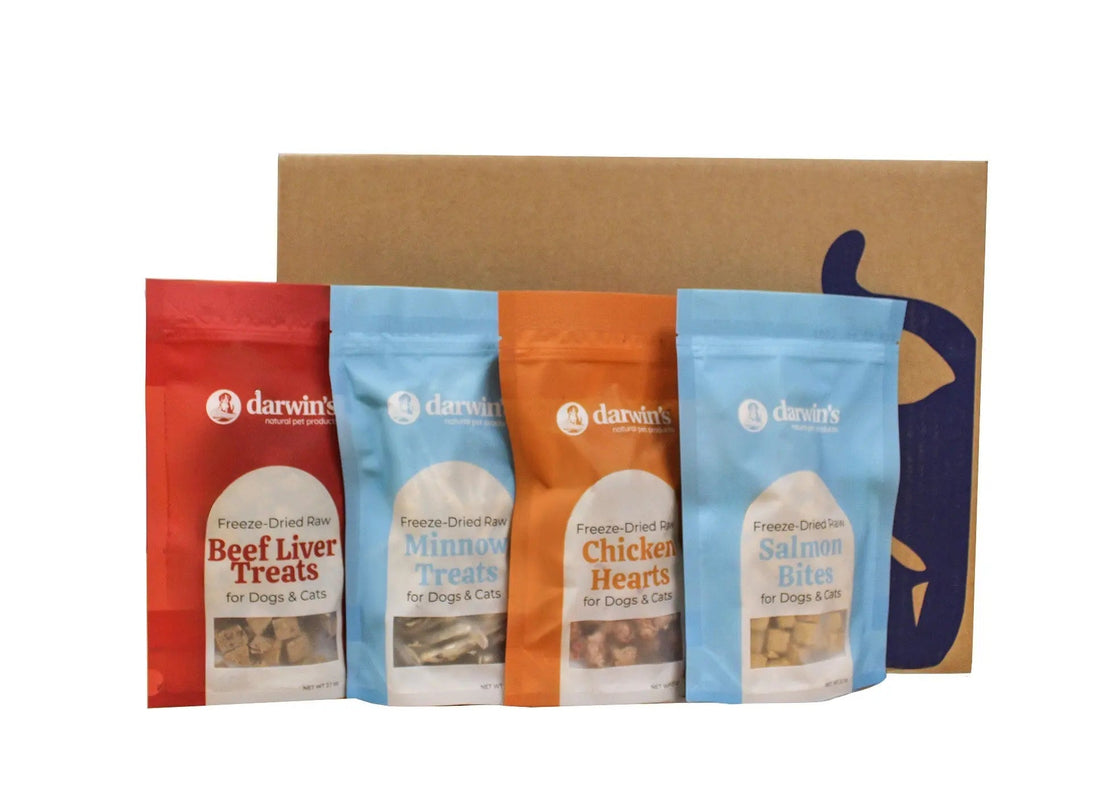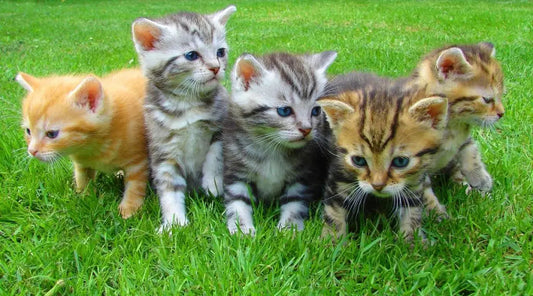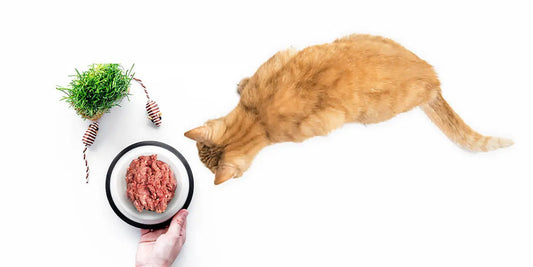
How Many Treats Per Day Should You Give Your Cat?
As a cat owner, you know the gratifying feeling of watching your kitten gobble up a delicious treat. They usher endless joy into your life—it’s a pleasure to give something back.
At times, however, you may wonder: How many treats should I give my cat a day? After all, they’re called “treats” for a reason. And, as we all learn during childhood, too many cat treats can spell trouble.
Fortunately, by following the proper guidelines, you can still show your cat some love without harming their health.
How Much Is Too Much When It Comes to Cat Treats?
So, how many cat treats per day are appropriate? While no specific number stands out as “the limit”, it’s best to observe that old mantra: Less is more.
-
Treats, by definition, don’t contain the full nutrition spectrum your cat requires.
As a general rule, limit cat treats to 10% of their daily calorie intake. Most cat food, and most treats, will include a per-serving calorie count for easy measuring.
Keep in mind that treats also include “people food” you give your kitten to nibble on. While these morsels may pack more nutrition than pure cat treats, they’re not formulated for cat health and often come with hefty calorie content. The same can be true for some dog treats.
Understanding Your Cat’s Daily Nutritional Needs
While avoiding overtreating plays a huge role in cat health, you should first ensure their daily diet meets their baseline nutritional needs. Once you’ve established a healthy diet, you can begin counting treats.
The first thing to remember: Cats are obligate carnivores, which means they need meat to thrive. Of course, many cats may enjoy nibbling on fruit, cheese, or crackers, but these foods fall short nutritionally.
The feline anatomy relies on the nutrients contained in animal meat. These meat-based nutrients (mostly proteins and fats) fueled cats’ evolution, and modern cats do best when their daily diet aligns with their inner, carnivore DNA.
As you design your cat’s diet, ensure ample, unprocessed protein. For ideal results, consider a raw food diet, rich in high-quality meat.
How Many Treats Should You Give Your Cat Based on Age and Activity Level?
Any cat person will tell you: No two felines are alike. This holds true when it comes to treat count. As a general rule:
-
Highly active cats can likely handle a higher calorie count per meal than their more sedentary counterparts
-
While age doesn’t always correlate to activity level, you may find that your older cats develop a more laid-back lifestyle with age. In any case, cats that get less exercise need fewer calories than their high-energy housemates.
So, if you’re looking after boisterous kittens, you can go a bit heavier on treats (provided they’re receiving a solid baseline diet—with raw cat food, for instance).
For older cats (or those with lower energy levels), consider treating a little less liberally.
When it comes to numbers, let 5-10 treats per day serve as your range. Obviously, this depends on the size and type of treat. You can dole out more little nips than hefty biscuits.
The Best Types of Treats for Cats: What to Look for
While treats should never replace essential nutrients (like those in fresh cat food), they don’t have to consist purely of empty calories.
Consider how it works with people: You can opt for a whopping slice of cheesecake (pure sugar, no nutritional value) or a bowl of fruit (satisfies the sweet tooth, but also delivers vitamins). The same goes for cats.
When treat shopping, look for options featuring high protein and natural ingredients. Darwin’s Natural Pet Products offers several top-notch choices, like Freeze-Dried Raw Minnows and Freeze-Dried Salmon Treats. Both feature human-grade fish, freeze-dried raw for perfect freshness. Another bonus? They’re both safe for dogs to eat. So if you’ve ever wondered, can dogs eat cat treats, the answer (at least in this case) is yes.
How to Avoid Overfeeding Your Cat with Treats
If you find yourself habitually overfeeding your cats, you may want to consider the reason behind the treating.
Rather than handing them out whenever they cast their “please” look your way, reserve them for two specific occasions:
-
Training – Food motivation works well when it’s time to train your cat. Skip treats after meals and keep them on hand when training time comes.
-
Rewarding – Sometimes, after a delightful day together, you just want to share the love. A treat offers an excellent way to pamper your cat.
For well-trained cats, a surprise reward now and then will keep them happy and engaged.
If you’re in the midst of coaching a kitten or newly acquired cat, reserve treats solely for the training sessions—you want to make sure they connect the pleasure with the encouraged behavior.
Treat Your Cat to Vibrant Health, With Darwin’s
Everyone’s happiest when living in alignment with their inner nature. And that goes for cats (and dogs) too. Cats didn’t evolve to dine on carbs and artificial fillers. While subpar food may sustain them, they’ll never thrive the way they do when in sync with their instincts.
Let your cats be all they can be. Whether for treats or for daily meals, consider switching to a raw cat food diet. At Darwin’s Natural Pet Products, we craft human–food-grade fresh cat food rooted firmly in ancestral soil.
For years, because options were few, pet owners had to opt for kibble and processed chow. Those days are past. Discover Darwin’s—sign up for our pet food delivery now!
Sources:
- UC Davis School of Veterinary Medicine. From Snacks to Scraps: Pets and “People Food”. https://synergy.vetmed.ucdavis.edu/news-article-fall-2023/snacks-scraps.
- UC Davis Veterinary Medicine. Role of Diet in the Health of the Feline Intestinal Tract and in Inflammatory Bowel Disease. https://ccah.vetmed.ucdavis.edu/sites/g/files/dgvnsk4586/files/inline-files/role-of-diet-feline-health-Glasgow_0.pdf
- UC Davis Veterinary Medicine. Veterinary Nutritionists Try to Curb Obesity in Cats. https://ccah.vetmed.ucdavis.edu/cats/cat-health#:~:text=veterinary%20nutritionists%20try%20to%20curb%20obesity%20in%20cats


